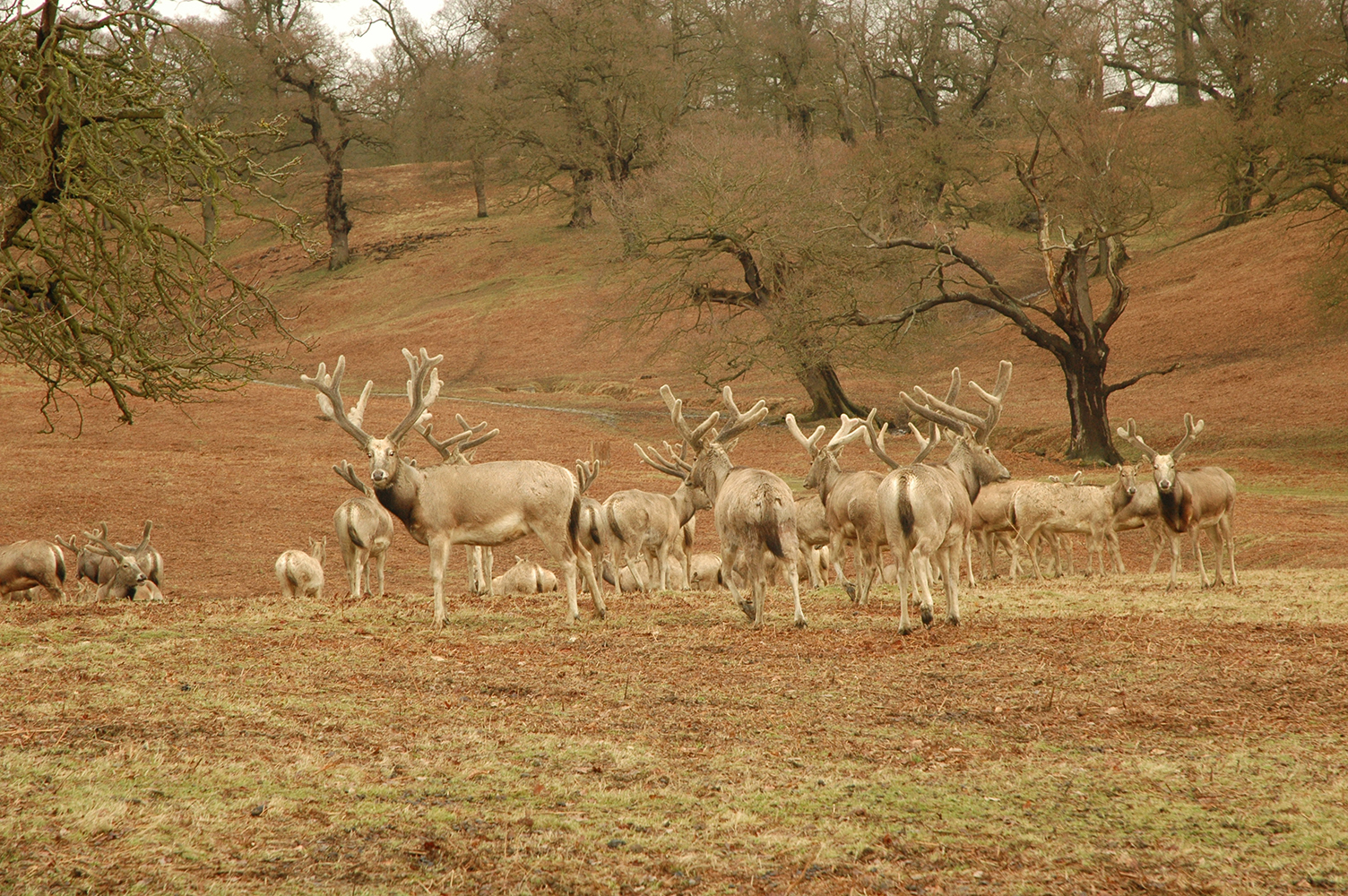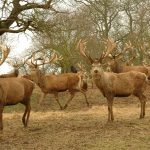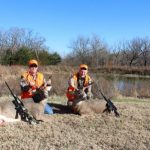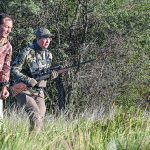This unusual cervid may be the world’s weirdest-looking deer.
Photo above: A big bachelor herd of Pere David’s deer at Woburn Abbey in England, photographed in January with deer in heavy velvet. A nucleus herd gathered at Woburn by the 11th Duke of Bedford saved the species, and the estate still manages one of the world’s largest herds.
Pere David’s deer is a large-bodied, semi-aquatic deer, considered a primitive deer that’s an offshoot of the round-antlered deer family Cervidae, genus elpahurus, one extant species, Elaphurus davidianus. It may be the world’s weirdest-antlered deer. Main beams point nearly straight up, and it is the only deer that has the longest typical tines pointing backward. Antlers are thick and heavily pearled, but there isn’t much apparent symmetry to their racks. Unlike most antlered animals, Pere David’s deer sometimes shed and regrow antlers twice per year.
If the antlers are odd, so is this deer’s appearance: Long tail, long face and neck, big hooves, tall, stout body. Its proper Chinese name is milu. It entered Chinese folklore during the Ming Dynasty (1368-1644) as sibuxiang, the mount of mythical character Jiang Siya in a classic Chinese fantasy. Translated, sibuxiang means “four not alikes,” described as: The tail of a donkey, the head of a horse, the hooves of a cow, the antlers of a deer. Not a bad description.
Aside from unique appearance, the milu has an interesting conservation story. It is believed to have been widespread across China, scarce by the nineteenth century. The milu is not especially wary. It’s a calm, phlegmatic deer. They can run, but rarely do. Hunted to near-extinction, a herd of milu were kept within the walls of the Emperor’s hunting gardens in Beijing (then Peking).
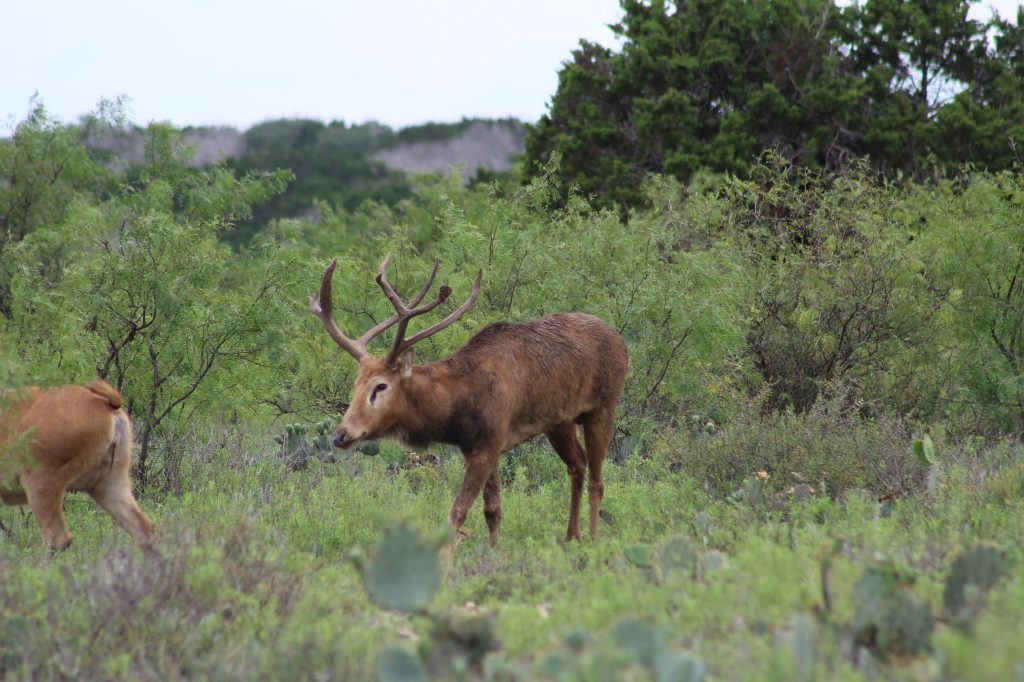
In 1866 French missionary Father Armand David (Pere David) sent the skins and antlers of three milu to Europe. Until then, the species was unknown, so it was named in his honor. Over the next decade a small number of milu were exported to zoos in Europe.
In 1895 a flood breached the Emperor’s garden walls. Deer escaped and were eaten by hungry peasants. It’s said that thirty remained in the garden. Fortunately, this tranquil; deer breeds well in captivity. It’s unknown how many might have been in the gardens of the Forbidden City when the next calamity struck five years later: the Boxer Rebellion, aimed to drive “foreign devils” from China.
On June 20, 1900, rebels surrounded the Legation Quarter, housing diplomats of eight nations: Austria-Hungary, France, Germany, Great Britain, Italy, Japan, Russia, and the United States. Each nation had a small contingent of soldiers, sailors, and marines, just 409 troops, against thousands of rebels, soon joined by elements of the Chinese army. The siege lasted 55 days.
Among the small US Marine contingent were some of our Corps’ great heroes. Daniel Daly, then a private, won the first of his two Medals of Honor by holding his position on the Tartar Wall—alone—with rifle and bayonet. In 1918, at Belleau Wood, First Sergeant Dan Daly is credited with rallying his troops to charge German machineguns by shouting, “C’mon, you sons-o’-bitches, do you want to live forever?” Also present in Peking was young Lieutenant Smedley Butler, “Old Gimlet Eye.” Wounded on the relief column, Butler fought in countless actions, served to Major General, and was the only other Marine to receive two Medals of Honor.
Despite high casualties and appalling conditions, the Legation Quarter held, an eight-nation relief column fighting its way through on August 14, 1900. The milu in the Emperor’s Garden didn’t fare as well. As a Marine, the way I like to tell the story, it was hungry Marines who killed and ate the last of them. In truth, it was probably German Imperial troops, since they held that sector. In any case, no Pere David’s deer survived the fighting in Peking.
After 1900, the only Pere David’s deer left were in captivity in Europe. Herbrand Russell, 11th Duke of Bedford, maintained a large deer park on his Woburn Abbey estate southwest of London. A hunter and pioneer conservationist, he had already experimented with various species, including Chinese water deer and muntjac. The significant free-range populations of both species in modern England descend from escapees when another storm broke the brick wall encircling Woburn. The Duke recognized the perilous status of Pere David’s deer and gathered a nucleus herd from European zoos.
At Woburn Abbey, they thrived. All Pere David’s deer in the world descend from these deer. Although uncommon, they are found on numerous Texas ranches, also in Argentina’s Patagonia, and in several English deer parks. The best part of their story: Reintroduction to China began in 1985, five males and fifteen females, followed in 1987 with eighteen females, all from Woburn Abbey, donated by Robin Russell, 14th Duke of Bedford, Herbrand Russell’s great-grandson. There have been other reintroductions, from various sources. The population in China is now estimated at 8,000, so the Pere David’s deer is stable, protected, and back in China to stay.
Current hunting opportunities include Argentina, England, and Texas. Again, let’s get real: This tranquil deer does not offer a sporting challenge. In most situations, the term “free range” does not apply. I have seen them in Argentina where they are not fenced, thus technically free-range, but happy in well-watered valleys they are unlikely to leave. In the purest sense, taking a Pere David’s deer is a collection, not a hunt. But within that context, there are valid reasons to harvest them: To apply value, to manage a herd, or to enhance a display of deer. Because Pere David’s deer are like no other antlered animal.
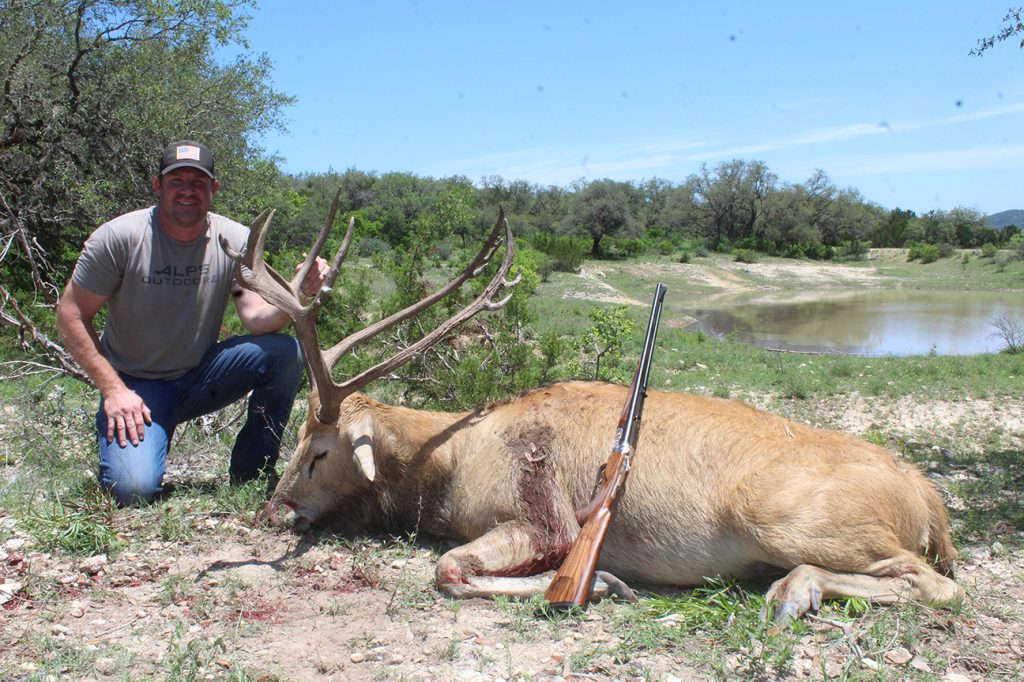
I’ve seen them at Woburn Abbey, still one of the largest single herds. Awesome to appreciate their history, conservation, and survival saga. My lifelong friend, Sports Afield publisher Ludo Wurfbain, took one in England. For years I was somewhat jealous, eventually accepting I could die happily without adding a Pere David’s deer to my life experience.
I’ve seen and photographed these deer on Texas ranches, as well as in Argentina and England. I don’t know what they were like when they had to worry about being eaten by tigers; my experience is they are placid and much too trusting.
Still, I was curious, because these deer are so different. I’d never seen one up close, never had the chance to wrap my hands around an antler. Several years ago, during one of daughter Brittany’s She Hunts camps on Record Buck Ranch in Texas, son-in-law Brad Jannenga decided he wanted to take a Pere David’s deer. Which, after all, is why game-ranching properties allow wildlife to drink their water and eat their grass.
We caught a small herd drinking and mudding-up at a waterhole. I had a catbird seat, watched him creeping and crawling. Brad was carrying a Krieghoff open-sighted double in .30-06. Perfect, gotta get close. He did, maybe 70 yards, pasted a big buck well and then again. Awesome bull, and I got to wrap my hands around the antlers and help load it. A blocky animal, they are heavier than I thought. References suggest 470 pounds for males, but I’m sure his was much heavier.
Since then, I’ve seen a couple more taken. Depending on feed, a big bull is likely 600 pounds, bigger than a cow elk, smaller than a mature bull. Estimation based on limited experience, but never accurate scales. Having seen this uncommon animal up close, I’d accepted that I would never take one. There are lots of animals I haven’t hunted, many that I never will.
So, last week, Brad and I were sitting in a deer stand on his Aspire Wildlife ranch in Texas, hoping for a management whitetail. Because it was the most interesting rifle in camp, I was carrying the same Krieghoff double in .30-06. Brad has a growing herd of Pere David’s deer, and they showed up at the end of the meadow, dozen cows tended by an old bull with poor antlers.
“Hey, that’s my last original bull; I don’t want him inbreeding. Let’s take him if he gets close enough,” Brad said. I demurred…but I didn’t protest too much. I thought this weird deer would a nice addition to our little wildlife museum in Kansas.
These days, I have sharp limits with iron sights. For an hour, the deer languished at 110 yards, too far. Then, slowly, the old bull made his way toward a waterhole. Just at sunset, he was within 50 yards when I took the shot. I needed both barrels and a spare. In my limited but consistent experience with these deer, like moose, they aren’t tough, but seem impervious to bullet shock.
Naturally, he went down in the mud, so we had to get the tractor. We had no accurate scale, but I’m still holding to my guess: around 600 pounds, a big animal. He was very old, antlers probably on the downhill side, but that was just fine with me. It’s still one of the world’s most unusual deer.


